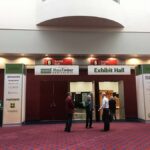The issue of green-washing remains a significant challenge to those of us who would like to see the building sector in this country do more than make unverifiable claims of sustainability. Transparency about the impacts of a given material is the only way to allow designers to make intelligent choices when selecting building products.
As an architect and longstanding advocate for sustainability I was troubled to read Kim Moore’s article, “New green wood building product takes off in Oregon.” The issue of green-washing remains a significant challenge to those of us who would like to see the building sector in this country do more than make unverifiable claims of sustainability. Transparency about the impacts of a given material is the only way to allow designers to make intelligent choices when selecting building products.
Opaque assertions about a product’s relative greenness cannot be easily verified. They put design professionals in the difficult position of parsing largely unsubstantiated environmental claims by the industry. There should be no doubt that if the wood we use in buildings is to be considered environmentally friendly, the wood must be certified by an independent third party regime like the Forest Stewardship Council (FSC). The truth is that FSC certified timber land in Oregon accounts for a paltry 4% of the total. For the remaining 96% of Oregon’s forest lands that are being actively harvested for building products, clear cutting and widespread pesticide use are considered “green” by the industry. There is little doubt that this is the definition of green-washing.
The timber industry has spent millions of dollars to support their claim that self-policing how their forests are managed and how the wood is processed and brought to market is adequate. Their claim is not only untrue, it is not – and has never been – recognized by any independent organization.
The primary basis of their claim is that trees sequester carbon and thus do not contribute to greenhouse gas emissions. This is only true of the trees that stay in the ground, providing habitat, stabilizing soils, sequestering carbon, and providing us with oxygen and breathtaking landscapes. Once the trees are harvested those benefits end. When the industry demands economic benefits at the expense of the health of the forests – not to mention human health – we all lose.
We should take note when an industry makes claims that they are unable to adequately support through independent means. We should not therefore assume that wood equals sustainability. Even if our sole focus is on a building product’s global warming potential (GWP), the material in the structure often makes up a relatively small fraction of the building’s life cycle footprint (including the materials used in construction and the energy consumption of the building throughout its life). Researchers at the Massachusetts Institute of Technology have calculated cases where 95% of a building’s life cycle GWP comes during the building’s use phase. This means that if you want to reduce climate impacts, how the constructed building performs is paramount. We know that traditional, wood-frame buildings perform poorly where energy use is concerned. At this point, how CLTs will perform is anybody’s guess. We do know however that claiming outright that the product is green does a disservice to your readers and the public at large.
University of Oregon’s Judith Sheine rightly points out in the article that “architects are very excited by sustainable products”. We are. More importantly though, architects have a professional responsibility to verify whether a product is – in fact – sustainable, and cannot ethically support erroneous and misleading claims by any industry. To do so is a disservice to our clients and the planet we call home.
Finally – and most troubling of all – is what happens when a fire breaks out in one of these wood buildings. We have seen what recent wildfires have done to thousands of wood buildings across the western United States this year, decimating the lives of countless individuals and families. With the extreme drought in the western states and emergency declarations by Oregon Governor Kate Brown, sustainability must include resilience. News of the structural fire of a recent CLT university building in Nottingham, UK should give pause to design professionals as well. Clearly, a building comprised of green materials that burns to the ground is no longer green. Although some European and Canadian locales have approved it, the International Code Council has appropriately rejected the industry’s request to have CLTs approved for use in tall buildings over their concerns about fire and structural integrity.
We must demand transparency and independent verification of any claim put forth by the building materials industry. Anything less warrants skepticism about those claims and raises the very real specter of green-washing. We must do better.
- Gregg Lewis, AIA, LEED AP received his Master of Architecture Degree from Yale University, was one of EnvironDesign Journal’s Top 25 Environmental Champions in 2005 and orchestrated the internationally acclaimed Cradle to Cradle Home Design Competition in 2004. He is Senior Director, Building Innovations at the National Ready Mixed Concrete Association.





